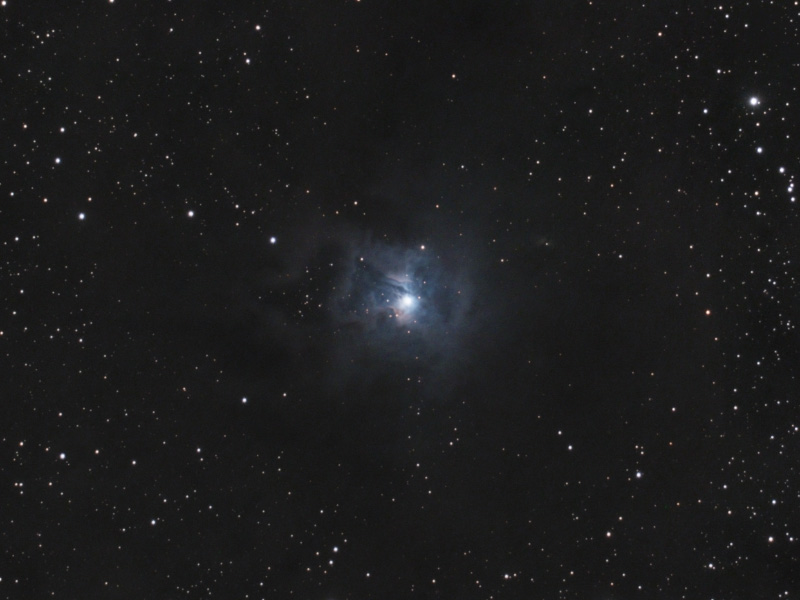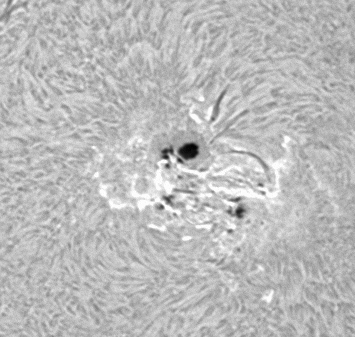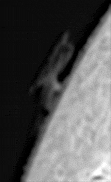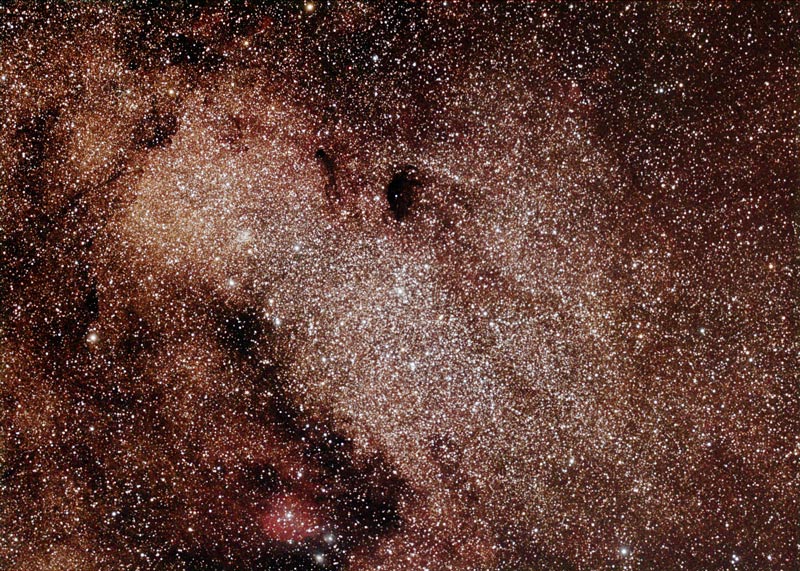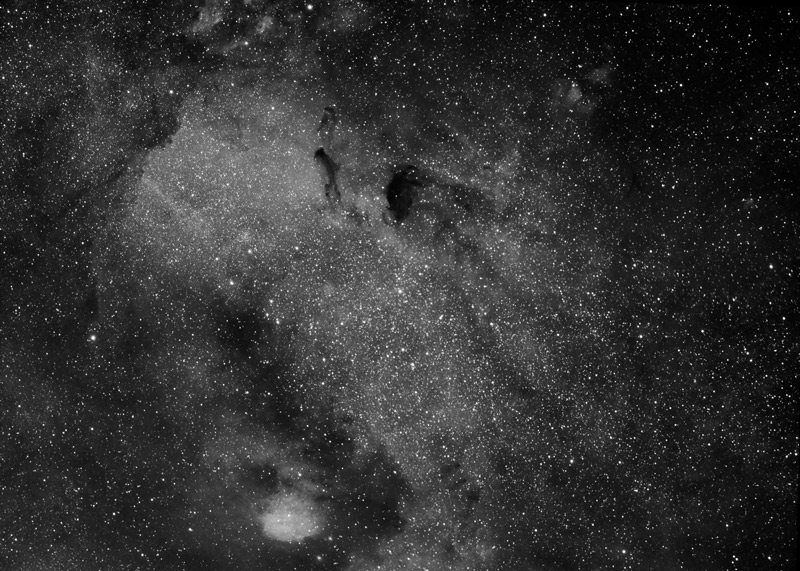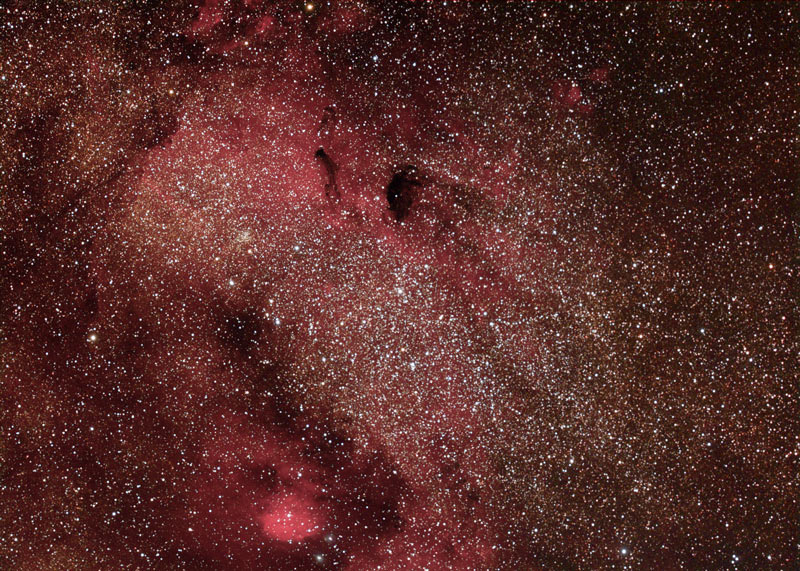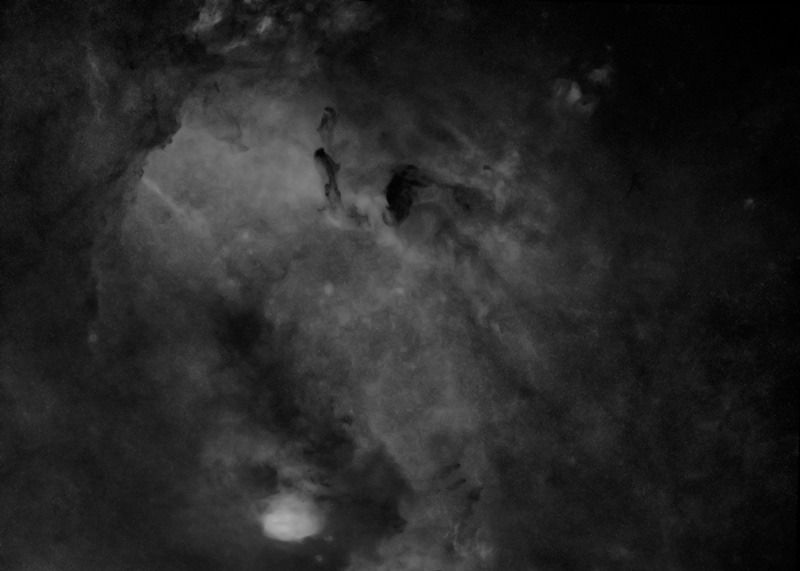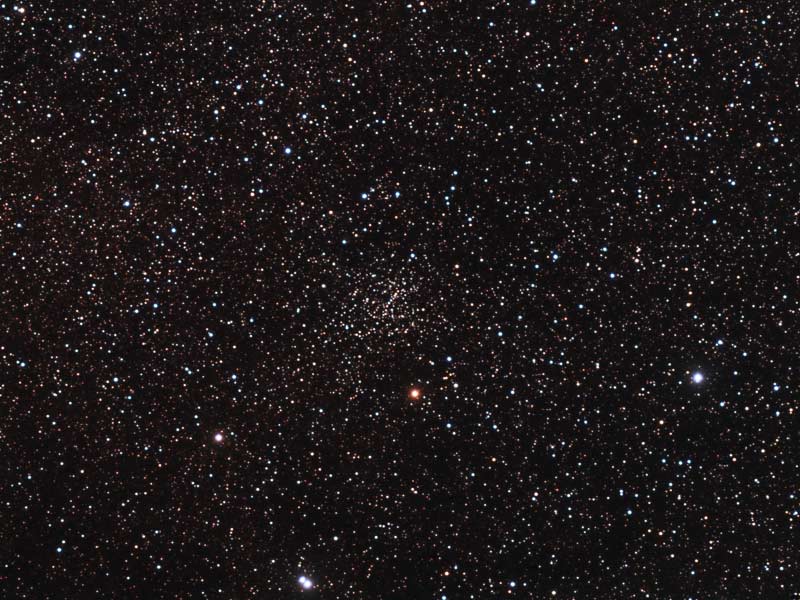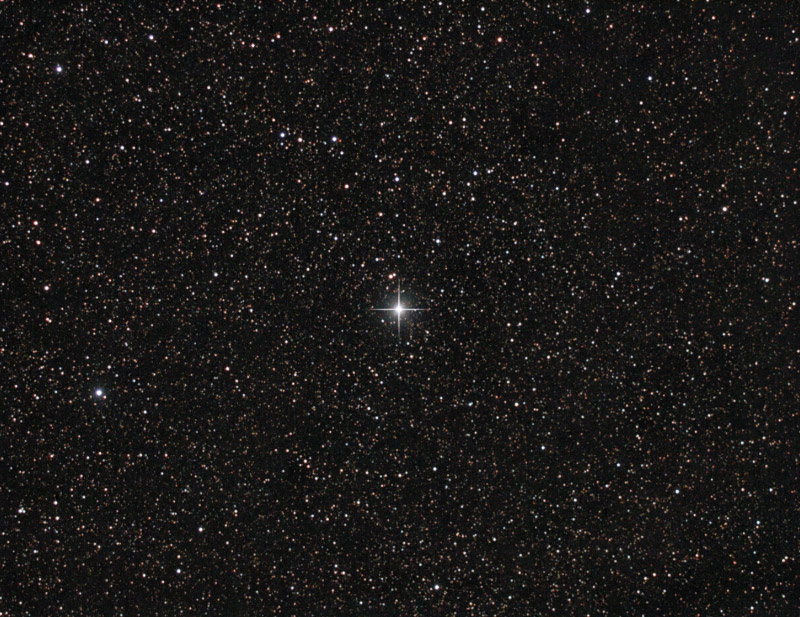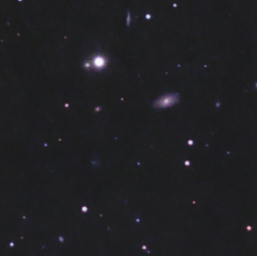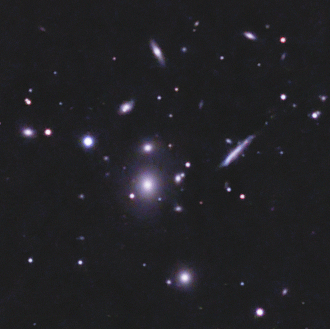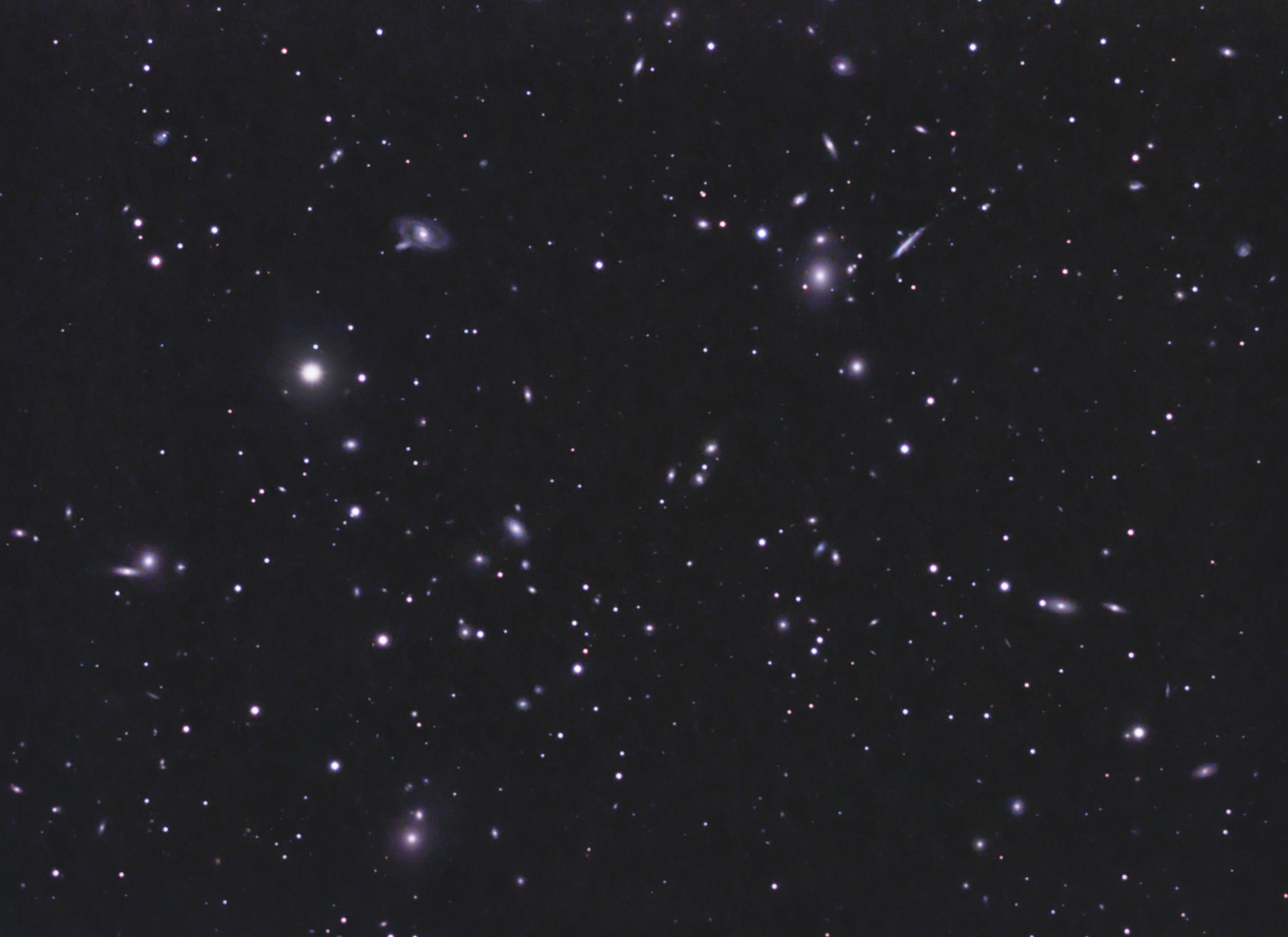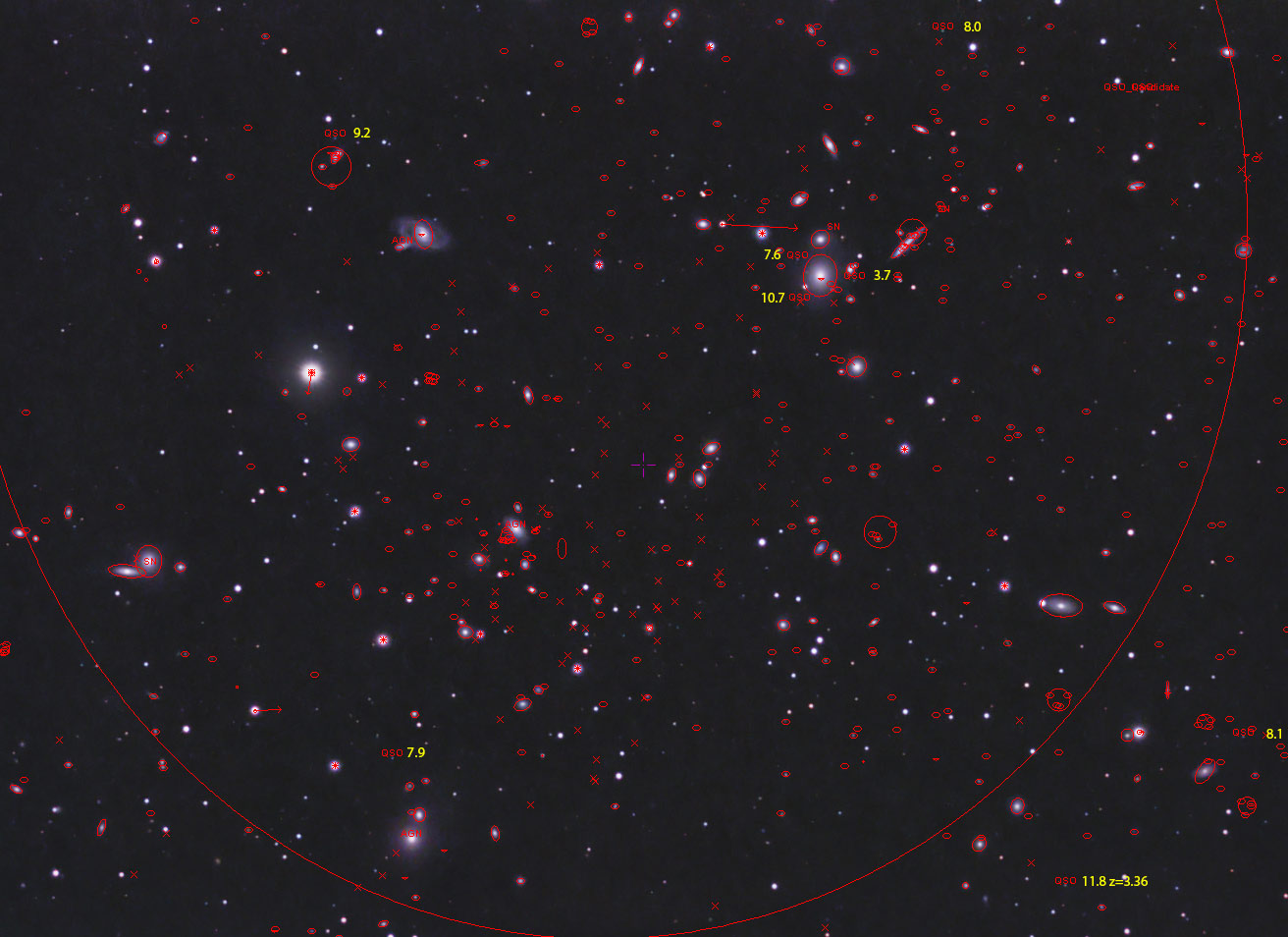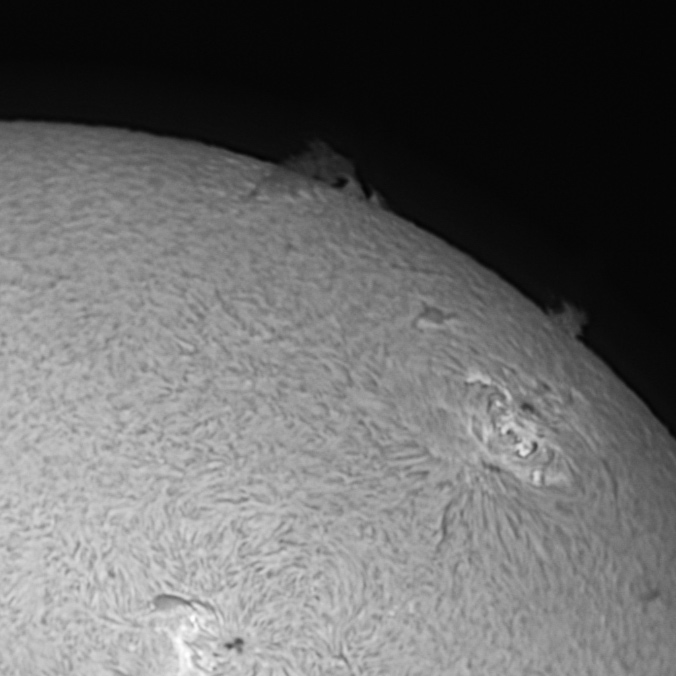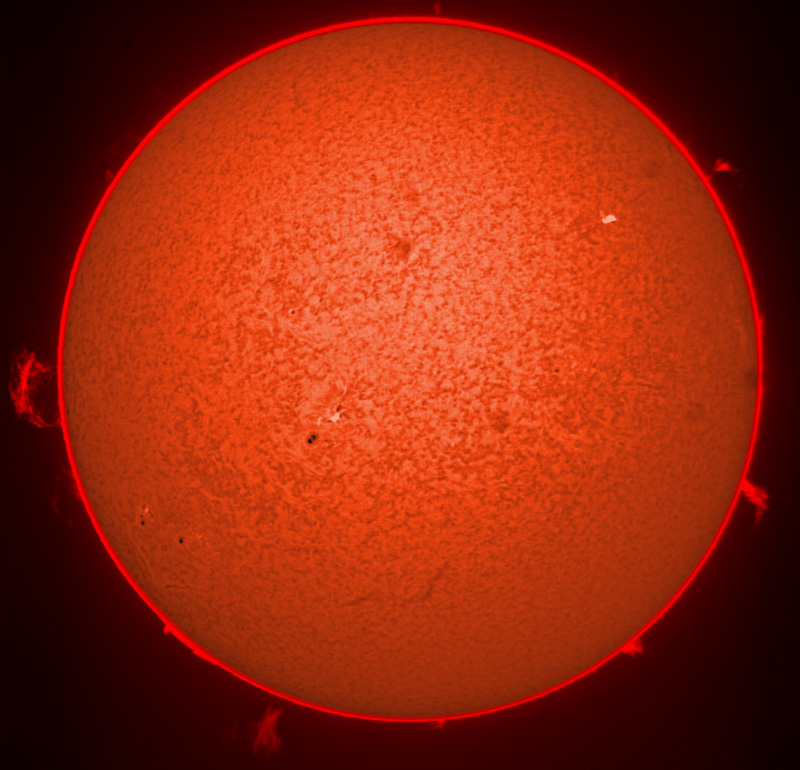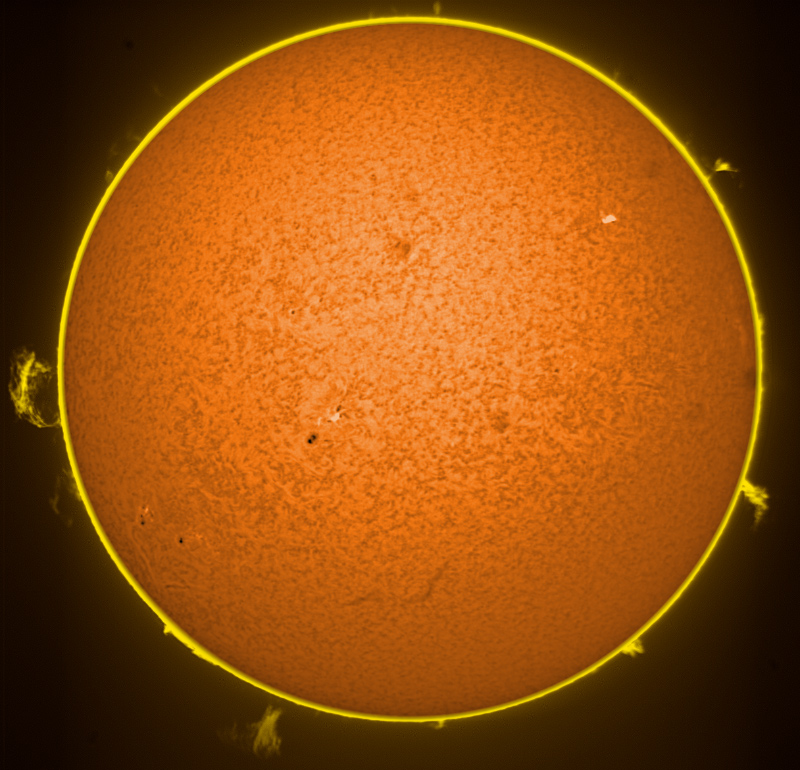I do all my imaging from these skies with an LPS filter, narrow band filter, a combination of both. Emission nebulae are great, galaxies are difficult, but can be very rewarding (especially if there are HII regions), reflection nebulae are very difficult and dust is impossible.
As a testament to the fact that I purchase too many filters, I was given a Chroma Loglow filter to test. So I've compared it the the Hutech IDAS LPS-P2 filter which many (including me) consider the gold standard light pollution filter. A quick visual inspection showed more light passing through the Chroma than the IDAS. I initially thought the Chroma had more of a reddish cast, but realized this was on a fluorescent bulb. Searching around for an incandescent bulb yielded similar, more neutral color balance for each with perhaps a slight blue cast to the IDAS.
Iris Nebula, a reflection nebula surrounded by dust shot through heavy light pollution:
Reflection nebulae are usually blue because the scattering is more efficient for blue light than red (this is the same scattering process that gives us blue skies and red sunsets) (Wikipedia).
The black void above, below, right, and left of the nebula is caused by intervening dust. darker skies allow the glowing dust to be imaged.
Dumbbell Nebula, an emission (planetary) nebula, at maximum elevation with minimal gradients due to light pollution:
Here are the details of the filter test:
It should be noted that the filters were used on different nights, though the conditions were similar. My first target was M24, low in the south, but in the direction with least light pollution, using an FS 60C at F 4.2 and a Starlight Xpress H9C camera. The star and background signal was much higher with the Loglow, though I did not note any difference in depth or gradients in this dense star field (comparison images not shown). The seeing was slightly better when the IDAS was used. The combined image can be seen here in a prior post.
Dumbbell Nebula
Next up was M27, an excellent target, as it has strong OIII and Ha emissions transiting at zenith in an area where gradients and light pollution are minimized. Using an FS 102 at F 6, I compared a Baader IR/UV filter to the IDAS and the Loglow. There were no appreciable light pollution gradients. The nebular emission signal was enhanced relative to the stars with both the IDAS and the Loglow. I could not appreciate any significant difference between the IDAS and the Loglow. I've attempted to minimize processing to color balance and matching digital development:
IR/UV
IDAS
Loglow
blink:
stack of 9x120 sec exposures, color balanced by eye followed by digital development in maxim.
Iris Nebula
Last was the Iris nebula, a reflection nebula surrounded by dust in the dreaded northern muck, again with the FS 102 at F6. As there appeared to be a significant color difference in the reflection component, the images were color balanced with x-calibrator. The reflection component appeared significantly more blue with the IDAS and Loglow compared to the IR/UV filter. I am not certain whether this is the result of grey light pollution contaminating the IR/UV images or enhanced color by the IDAS and Loglow due to rejection of signal in the middle of the color spectrum. In any event, I found the effect aesthetically pleasing.
IR/UV
IDAS:
Loglow:
stack of 19x5 minutes color balanced with x-calibrator, ddp in maxim.
An aggressive histogram stretch in maxim showed the worst gradient with the IR/UV and best with Loglow, though the IDAS was close.
IR/UV
IDAS
Loglow
I did shoot some luminance with the two filters, but the background signal was so high with 2 minute subs, that it reached the non-linear region of my camera, making flats ineffective. Between hot spots and dust specks it was difficult to make any comparisons.
Signal:
I compared the stellar, nebular, and background signal for a representative section of the M27 stacks and found the following:
For all of the quantities, the Lowglow had higher signal than the IDAS; the IR/UV the highest signal of all.
However, for the ratio of stellar signal to background and nebular signal to background, the IDAS had the highest ratio, followed by the Loglow, and then the IR/UV filter.
| idas | loglow | ir/uv | |
| M27 background | 1,280 | 2,230 | 2,890 |
| star | 27,777 | 27,928 | 30,110 |
| fwhm | 2.03 | 1.74 | 1.75 |
| nebula (color balanced) | 1779 | 2733 | 3388 |
| nebula (unbalanced) | 1672 | 2745 | 3400 |
| star/background | 21.70 | 12.52 | 10.42 |
| nebula/background | 1.39 | 1.23 | 1.17 |
| nebula(unbalanced)/background | 1.31 | 1.23 | 1.18 |
| iris background | 3,500 | 5,376 | 7,257 |
| iris star | 19,000 | 21,000 | 28,000 |
| fwhm | 1.68 | 1.98 | 1.76 |
| excalibrator green | 0.93 | 0.99 | 1.03 |
| excalibrator blue | 0.76 | 0.81 | 1.16 |
| star/background | 5.43 | 3.91 | 3.86 |
Takahashi Fs 102 @619 mm Hutech IDAS LPS-P2/Choroma LoGlow, Starlight Xpress H9C/H9
M 27 34x2 minutes RGB, IRIS ~100 x 2 min luminance, 84x5 min RGB
9/15-9/24/14 Neport Beach, CA
Bottom Line
The two filters were comparable in terms of reducing light pollution gradients and enhancing nebular emissions.
The LoGlow seemed to be slightly better than the IDAS-P2 in terms of light pollution gradient reduction.
The LoGlow also passed more signal while the IDAS-P2 had a higher signal to background ratio.
clear skies
